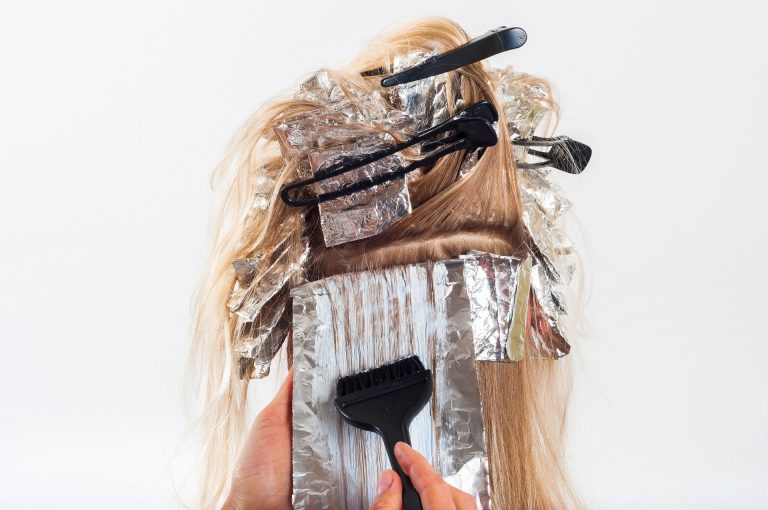

Okay, so by now it should be established that maybe lightening your hair is a little harder than it looks and is best left up to a trained colorist. So what about Tinting? Tinting your hair should be as easy as choosing a color and slapping it on, right? Wrong. Although sometimes more forgiving, tinting is as complex of a procedure as lightening can be.
When formulating a color for you, a stylist has to consider what your hair looks like first. This is where our color wheel and NRP comes in again. If you come in with red hair and want a cool brown from tinting, your stylist will need to add tones to the tinting in order to neutralize the red, as well as tones to create the cool brown you desire. This gets more complicated when there are multiple colors in the hair, or when the roots and ends are different colors due to color grow-out. This will require your stylist to formulate multiple colors for different sections of your hair. Putting one color, or one tube of boxed dye, over a whole head of hair doesn’t take into account the color that exists underneath, therefore the final result will show many discrepancies in tone and shade.
Application counts during tinting too! Overlapping a new color with a previous color can create something called banding, which is where horizontal stripes of darker color exist throughout the hair. Head heat counts here too! Color applied close to the scalp will develop faster and must be accounted for.
In regards to box color from the store specifically, they are a “one size fits all” product. This means that, in order to appeal to a wide audience of many different hair types, they use the strongest levels of ammonia and hydrogen peroxide. This assures that the tinting product will blast open the cuticle of even the coarsest strand of hair, but as we discussed before, increasing the strength of the product creates more stress on the hair. The addition of metallic salts in many at-home color tinting kits coats the hair with every use, making it harder for the color to be removed and may turn odd colors when bleached (which is why highlights over box-colored hair can quickly turn in to a color correction). Unfortunately, even the products that say “semi-permanent” never truly leave your hair. Even when the color fades out, metallic salts and chemicals from the tinting process stick around until they’re cut out.
Now, lets say you’ve read all of this advice and warning, but still decided you want to go ahead and begin tinting and coloring your hair at home, or you colored it in the months before you read this article. The first rule when you go back to your stylist is that you ABSOLUTELY must tell them what you put in your hair. As described above, tinting hair color is chemistry. Certain chemicals do not react well together and can cause a disaster of color or damage when combined. So, forgo all shame or embarrassment and let them know as many details as possible. The more we know, the better we can proceed, the happier you will be with the outcome!
Give us a call at Alux Spalon today, and lets avoid those messy hair tinting mistakes, and take you straight through to the lush, sleek, and vibrant results you desire.
Phone: (970) 923-9407